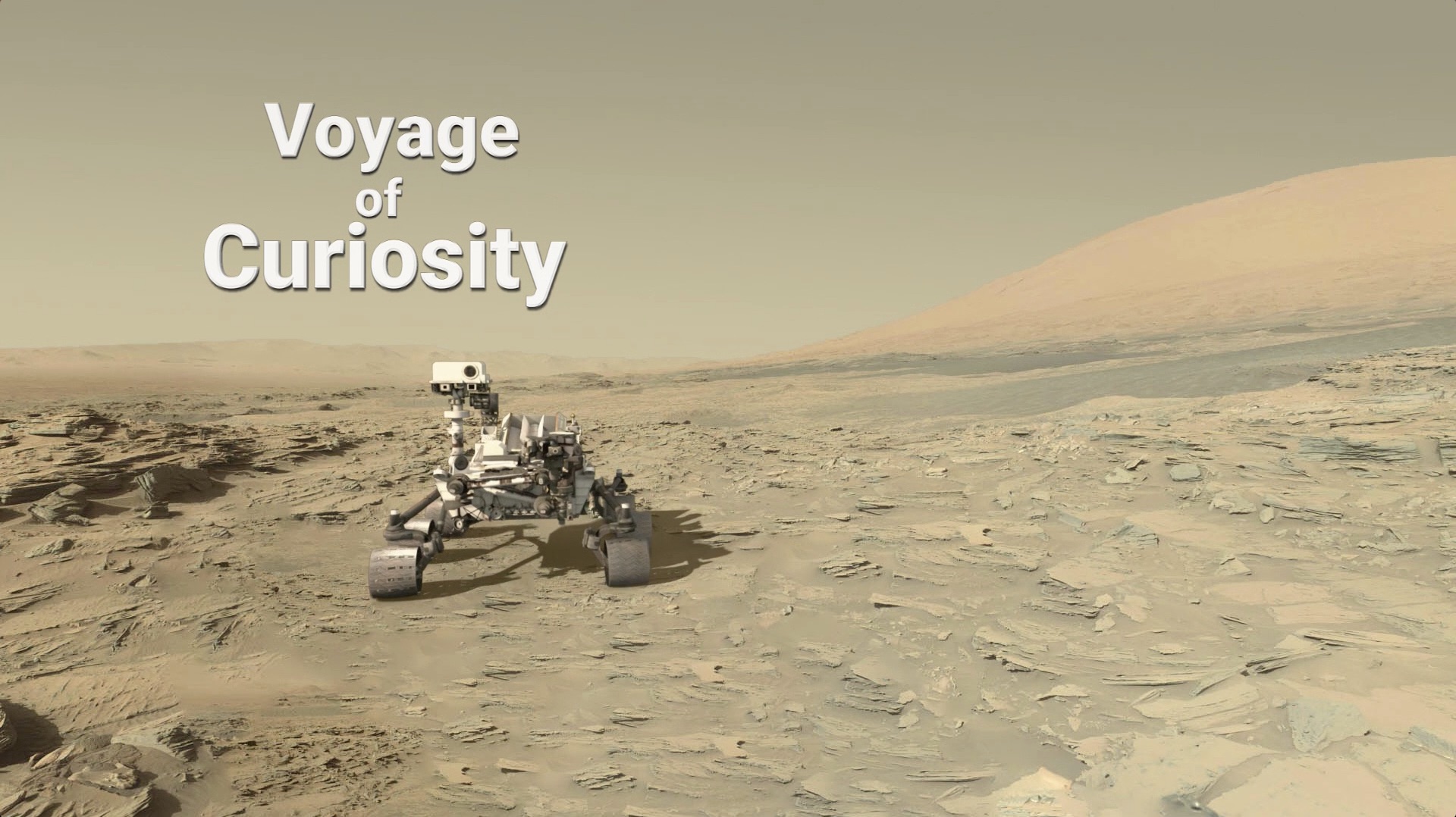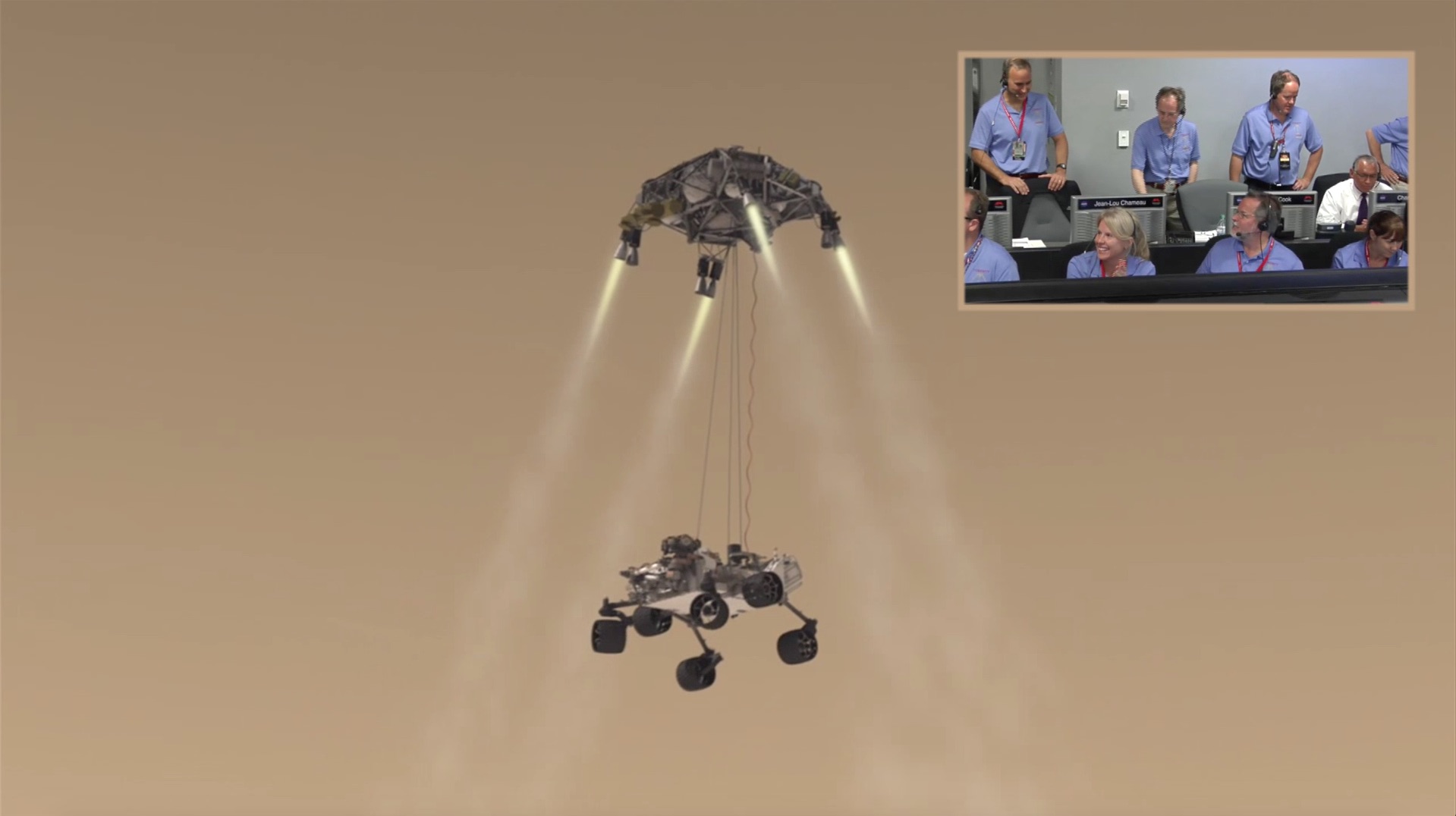Curiosity Rover Documentary Details Mars Robot's Science Discoveries

The journey of NASA's Mars Curiosity rover has been filled with close calls and amazing discoveries. Now, a new documentary chronicles the life (thus far) of this incredible mission.
"Voyage of Curiosity: A Martian Chronicle" is primarily an extensive roundup of the science discoveries that this little robot has made since its arrival on Mars in 2012. The film also provides a timeline of the major events of the mission, including the 7 minutes of terror while the rover was being lowered onto the surface.
The movie excels in its handling of the technical details of the mission. There is love and affection in the way it documents things, such as the intricate movements required by the rover's flex arm to collect and analyze samples; the way mission scientists process images from the surface to make it easier for geologists to identify rock features; or why the rover scuffs the Martian dirt "like a batter at home plate" before digging into it. [Amazing Mars Photos by NASA's Curiosity Rover (Latest Images)]
With extensive images of Mars' surface taken by Curiosity and other explorers, as well as simulations and animations, the movie "offers audiences the chance to see Mars – and vicariously touch and taste the Red Planet – from the rover's point of view," according to a statement from the filmmakers, obtained by Space.com.
Curiosity's main mission was to find out if Mars could have supported life in the past. Although Mars' surface may resemble a homogenous, rocky desert today, the documentary helps illuminate the significance of the different rocky features that Curiosity discovered and explored. As the rover crossed the Martian surface, it found more and more evidence of ancient lakes and rivers, but also of repeated droughts and floods. The history of Mars was not only wet, but evolving.

Get the Space.com Newsletter
Breaking space news, the latest updates on rocket launches, skywatching events and more!
Mar's atmosphere has also changed over many eons, and is still changing today; this fact unfolded over several years, thanks to the work of Curiosity and critical observations by the MAVEN probe orbiting Mars. An atmospheric chemistry lesson might not seem like great entertainment, but "Voyaging of Curiosity: A Martian Tale" delivers this information in a succinct way.
The movie also ties these science discoveries to the possibility of humans one day visiting Mars. The rover has taken readings of the radiation on the surface (a serious hazard for humans); it found high levels of perchlorates in the soil that can be used for rocket propellant (a plus for possible Martian colonization) but which are also toxic to humans (a minus for future Martian visitors).
Watching the documentary is a fun reminder of the major events in Curiosity's life, such as when the rover had to cross treacherous terrain or climb mountains. Or when it played ;"The Happy Birthday Song" one Earth-year after it touched down on the Martian surface. The movie is an excellent roundup of much of the science that Curiosity uncovered, and a reminder that every mission is an adventure with unexpected twists and turns.
The 90-minute documentary is available on Amazon.com's XiveTV channel. The movie is free for Amazon Prime members and can be rented in HD for $2.99. (Full disclosure: The film was written and directed by Dave Brody, a former executive producer for Space.com.)
Follow Calla Cofield @callacofield. Follow us @Spacedotcom, Facebook and Google+. Original article on Space.com.
Join our Space Forums to keep talking space on the latest missions, night sky and more! And if you have a news tip, correction or comment, let us know at: community@space.com.

Calla Cofield joined Space.com's crew in October 2014. She enjoys writing about black holes, exploding stars, ripples in space-time, science in comic books, and all the mysteries of the cosmos. Prior to joining Space.com Calla worked as a freelance writer, with her work appearing in APS News, Symmetry magazine, Scientific American, Nature News, Physics World, and others. From 2010 to 2014 she was a producer for The Physics Central Podcast. Previously, Calla worked at the American Museum of Natural History in New York City (hands down the best office building ever) and SLAC National Accelerator Laboratory in California. Calla studied physics at the University of Massachusetts, Amherst and is originally from Sandy, Utah. In 2018, Calla left Space.com to join NASA's Jet Propulsion Laboratory media team where she oversees astronomy, physics, exoplanets and the Cold Atom Lab mission. She has been underground at three of the largest particle accelerators in the world and would really like to know what the heck dark matter is. Contact Calla via: E-Mail – Twitter









